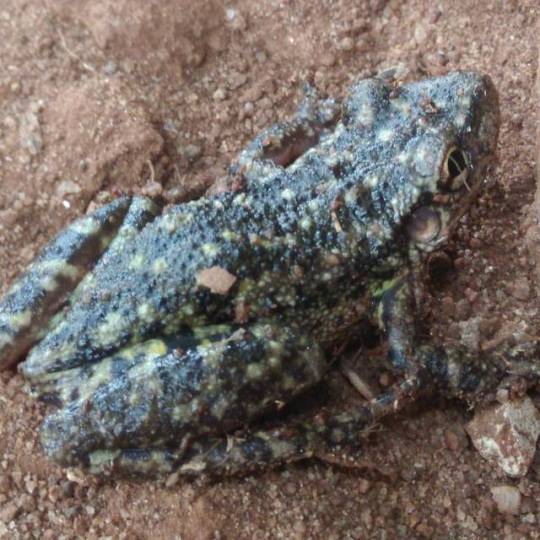#Agalychnis moreletii
Note
top five frogs? <3
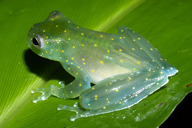
Cochranella euknemos

Cochranella granulosa

Dendrobates tinctorius

Agalychnis moreletii

Brachycephalus pitanga
18 notes
·
View notes
Text
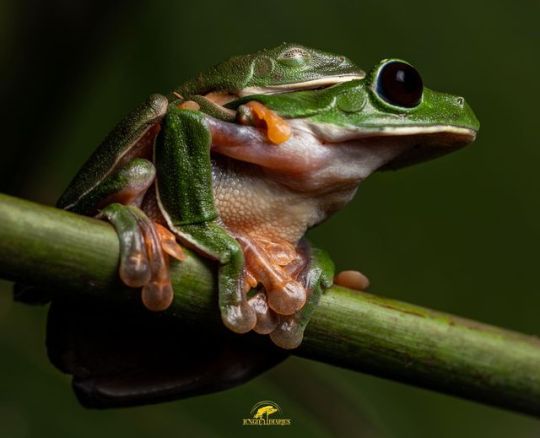
Morelet's Tree Frog, Agalychnis moreletii, in amplexus, family Hylidae, Guatemala
photograph by Jungle Diaries
#central america#frog#phyllomedusine#tree frog#agalychnis#hylidae#amphibian#herpetology#animals#nature
50 notes
·
View notes
Note
First i must apologize I have a tendency to forget that tumblr - even when we're all 'on' - is not live interaction and additionally you can't actually read my mind 😅
This was in reaction to seeing your ... delightful?? .. new frog. In such a state. And I got nervous 😋🦀💖

Annon... I´m gonna cry... I love you♡♡♡ you´re making me do happy jumps♡
And I understand fully what you mean about "reading minds" if you can call it that, we´re all there at times!
I hope this is you trying to get me to talk about my wonderful frog Kaj because that´s what I´m gonna do know XD
-
This is Kaj - named after my second favorite show as a child - he´s 25 cm long, and he´s a treefrog, there didn´t stand which one but my best guess is a red eyed tree frog, he just doesn't have the blue stripes, he could also be a Agalychnis moreletii (Morelet's tree frog) but he doesn't have black eyes and Morelet´s are known for their black eyes (a nickname of theirs is black eyed frog).
He could also be an American green tree frog, but his feet are a bit too pigmented, and back a bit to light for that, although the eyes would match there.


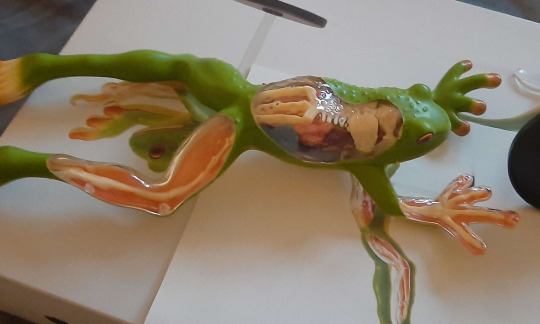
Actually he´s a woman as he has an ovary and oviduct (the blue stuff you can see below his urostyle) but I didn´t know that until I unpacked him, where I already had named him
Going with the idea he´s a Morelet (as that´s what he looks most like) he would be around 60mm (f-54 m-60/64)
Red eyed tree frog gets around 6/7 cm (f-7,5 m-5)
All in conclusion he´s a tree frog. Which kind of one? Karl.
And no, the crabs need not fear, he´s much too small to be of any danger in the wild, and my Kaj is made of plastic so he doesn't really jump or eat, unfortunately.
Although some crabs might want to watch out for the Goliath frog... (world's biggest frog at around 32 cm and 3.3 kilograms)
#im always so nervous if my english is good enough and if i have misunderstood something because of it#no art just talk#kaj the frog#frog#frogs#i dont know how to replay when people gives me compliments#they make me so happy and i cant even get it down in words so i end up usually just giving them a thank you but i mean so much more#if any better frogs experts can help me out please do#this is just a take out of my own knowledge#ive always had an oppositions with reptile and amphibians#mostly because my dad talked about how he grew up with turtles fish reptiles and frogs#but the frogs just kicked extra hard this last month and they have been filling almost every minut of my days in some way#ask
7 notes
·
View notes
Text
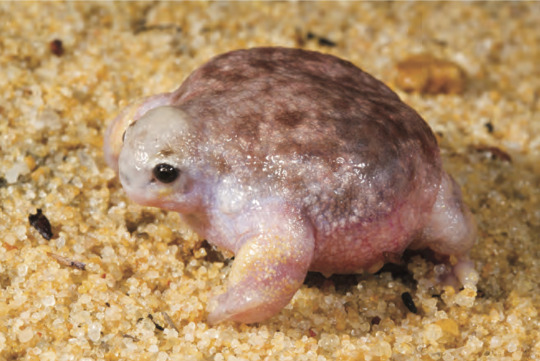

Turtle Frog: The only species in its genus, this frog lives in the arid climates of Western Australia. In order to hide from the dry conditions, they burrow into the sandy dirt to take shelter. However, while most burrowing frogs dig in using their hind legs, these frogs use their powerful forelimbs to dig forwards. After springtime rain, a male and female will select each other as mates before digging deep underground (sometimes over a metre!) They spend several months together in this burrow before breeding, then lay their eggs in place. The young fully metamorphosize within the eggs and emerge as full-fledged froglets.
Morelet's Tree Frog: Once common in the pet trade, their wild populations are declining due to the chitrid fungus and habitat destruction. Because of this, they’re officially listed as critically endangered and are possibly extirpated from Southern Mexico, only remaining in patches of Central America. They lay their green-tinged eggs over water, letting the tadpoles drop into it when they hatch. When breeding, the female chooses the male based on the length and frequency of his call.
5 notes
·
View notes
Photo

MORELET’S TREE FROG
Agalychnis moreletii
©Laura Quick
Morelet’s tree frog is a species of tree frog of family Hylidae. It belongs to the leaf frog subfamily, and is found in Belize, El Salvador, Guatemala, Honduras, and Mexico. They have also been called black-eyed leaf frog and popeye hyla.
The population of Morelet’s tree frogs are also being affected due to a disease called Chytridiomycosis, which is an infectious disease that kills amphibians. Chytridiomycosis and habitat destruction are projected to cause the population to decline over 80% in the next 10 years. In some regions, the frogs have gone extinct completely. source
Other posts you might like:
Strawberry Poison Frog
Red-eyed Tree Frog
Pygmy Marsupial Frog
#morelet's tree frog#agalychnis moreletii#©laura quick#costa rica#anura#chytridiomycosis#central america#popeye hyla#elsalvador#nicaragua#guatemala#honduras#mexico#cute#amphibians#black-eyed leaf frog
179 notes
·
View notes
Video
Rana by César Camilo M
Via Flickr:
Nombre científico: Agalychnis moreletii Nombre común: Rana de ojos negros Foto tomada: La finca de los Andes, Ahuachapa, Ruta de las Flores Esta especie esta en peligro de extinción en el País.
#cesar2mendez#el salvador#foto#geoturismo#agalychnis moreletii#black eyed tree frog#black eye tree frog#rana#frog#hydrangeas#ahuachapa#ruta de las flores
8 notes
·
View notes
Note
FRÖG
-Mica
FROGGE @’^’@ケ.
I wanna rear a frog. Especially agalychnis moreletii. These little guys!!
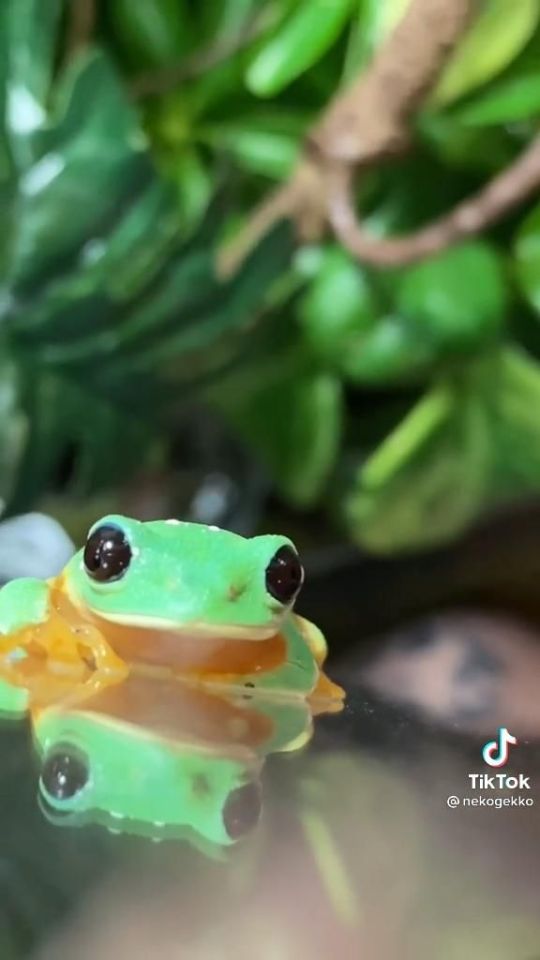
25 notes
·
View notes
Photo
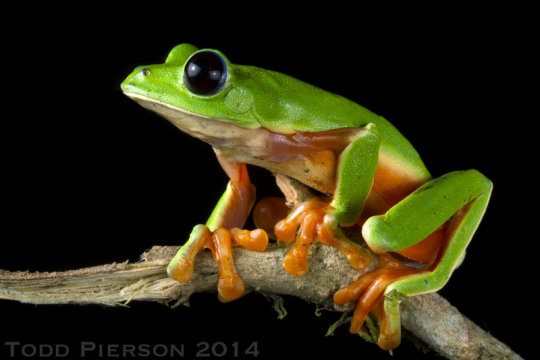

The Morelet’s tree frog [also known as the black-eyed tree frog, Agalychnis moreletii] can be found in Mexico, Honduras, Guatemala, El Salvador, and Belize. These frogs inhabit the canopy layer of moist forests, but are rarely seen by humans due to their beautiful green camouflage. Images by Todd Pierson and Maria Delia Basanta.
194 notes
·
View notes
Text
Lista de Anfibios en peligro de extinción
Lista de Anfibios en peligro de extinción
Esta es una parte representativa de todos los anfibios en peligro de extinción, la cual está sujeta a cambios debido a que algunas especies podrán desaparecer en el transcurso del tiempo y otras podrán abandonar esta lista gracias a las mejoras en su medio ambiente y a los esfuerzos que hagamos los seres humanos por preservar estas.
Agalychnis moreletii (Rana de Morelet)
La rana de Morelet, cuyo…
View On WordPress
0 notes
Video
Our little #chupacabra hunting an endangered Black-eyed Leaf Frog (Agalychnis moreletii) that is native to Belize, El Savador, Guatemala, Honduras and Mexico. 🐸... #MissOtis #Otis #LifeWithOtis #pug #pugs #pugsofinstagram #pugsnotdrugs #pugpuppies #pugpuppy #puglife #puglove (at Brea, California) https://www.instagram.com/p/BnBwpJ4DpZC/?utm_source=ig_tumblr_share&igshid=gapryocb58f8
#chupacabra#missotis#otis#lifewithotis#pug#pugs#pugsofinstagram#pugsnotdrugs#pugpuppies#pugpuppy#puglife#puglove
0 notes
Photo

Morelet's Tree Frog - Agalychnis moreletii
Although not as popular as its congener, the Red-eyed Tree Frog (Agalychnis callidryas), the Morelet's Tree Frog, Agalychnis moreletii (Hylidae), also called Black-eyed Leaf Frog, is equally impressive and certainly faces greater threats.
It is an uncommon and Critically Endangered species with patchy distribution, from central Mexico to Central America. Populations in Mexico have almost entirely disappeared, likely due to chytridiomycosis.
References: [1] - [2]
Photo credit: ©John P. Clare (CC BY-NC-ND 2.0) | Locality: not indicated (2014)
#nature#animals#morelet's tree frog#agalychnis moreletii#agalychnis#mexico#central america#fauna#critically endangered#wildlife#frog#amphibia#anura#hylidae#chytridiomycosis#zoology#original
116 notes
·
View notes
Photo

MORELET’S TREE FROG
Agalychnis moreletii
©Laura Quick
Morelet's tree frog is a species of tree frog of family Hylidae. It belongs to the leaf frog subfamily, and is found in Belize, El Salvador, Guatemala, Honduras, and Mexico. They have also been called black-eyed leaf frog and popeye hyla.
The population of Morelet's tree frogs are also being affected due to a disease called Chytridiomycosis, which is an infectious disease that kills amphibians. Chytridiomycosis and habitat destruction are projected to cause the population to decline over 80% in the next 10 years. In some regions, the frogs have gone extinct completely. source
Other posts you might like:
Strawberry Poison Frog
Red-eyed Tree Frog
Pygmy Marsupial Frog
#morelets tree frog#agalychnis moreletii#©laura quick#belize#honduras#popeye hyla#black-eyed tree frog#chytridiomycosis#cute#amphibian#animal#guatemala
8 notes
·
View notes
Video
Morelet's Treefrog Sleeping by Kevin Wells
Via Flickr:
Agalychnis moreletii, southern Belize, in the Columbia River Forest Reserve
#frog#treefrog#tree#agalychnis#belize#jungle#forest#amphibian#Morelet's tree frog#Agalychnis moreletii#black eyed tree frog#black eyed leaf frog
3 notes
·
View notes
Video
Agalychnis moreletii by Todd Pierson
Via Flickr:
Polliwog from Alta Verapaz, Guatemala. FV.
#todd#pierson#todd pierson#amphibia#amphibian#anura#anuran#frog#hylidae#treefrog#tree#agalychnis#moreletii#agalychnis moreletii#morelet's#morelet's treefrog#black-eye tree frog#black eyed tree frog
1 note
·
View note
Photo
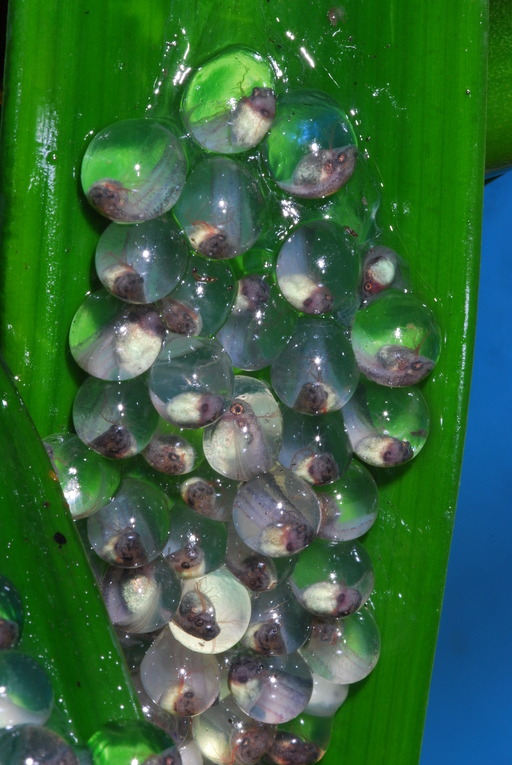

The developing eggs of Agalychnis moreletii, also known as the Morelet’s tree frog. These frogs are native to Belize, El Salvador, Guatemala, Honduras, and Mexico. They mostly breed in the summer months, depositing clutches of 50 to 75 eggs on leaves or ledges which hang over a body of water. When the eggs hatch, the tadpoles fall into the water to complete their development. Images by Dr. Peter Janzen.
899 notes
·
View notes
